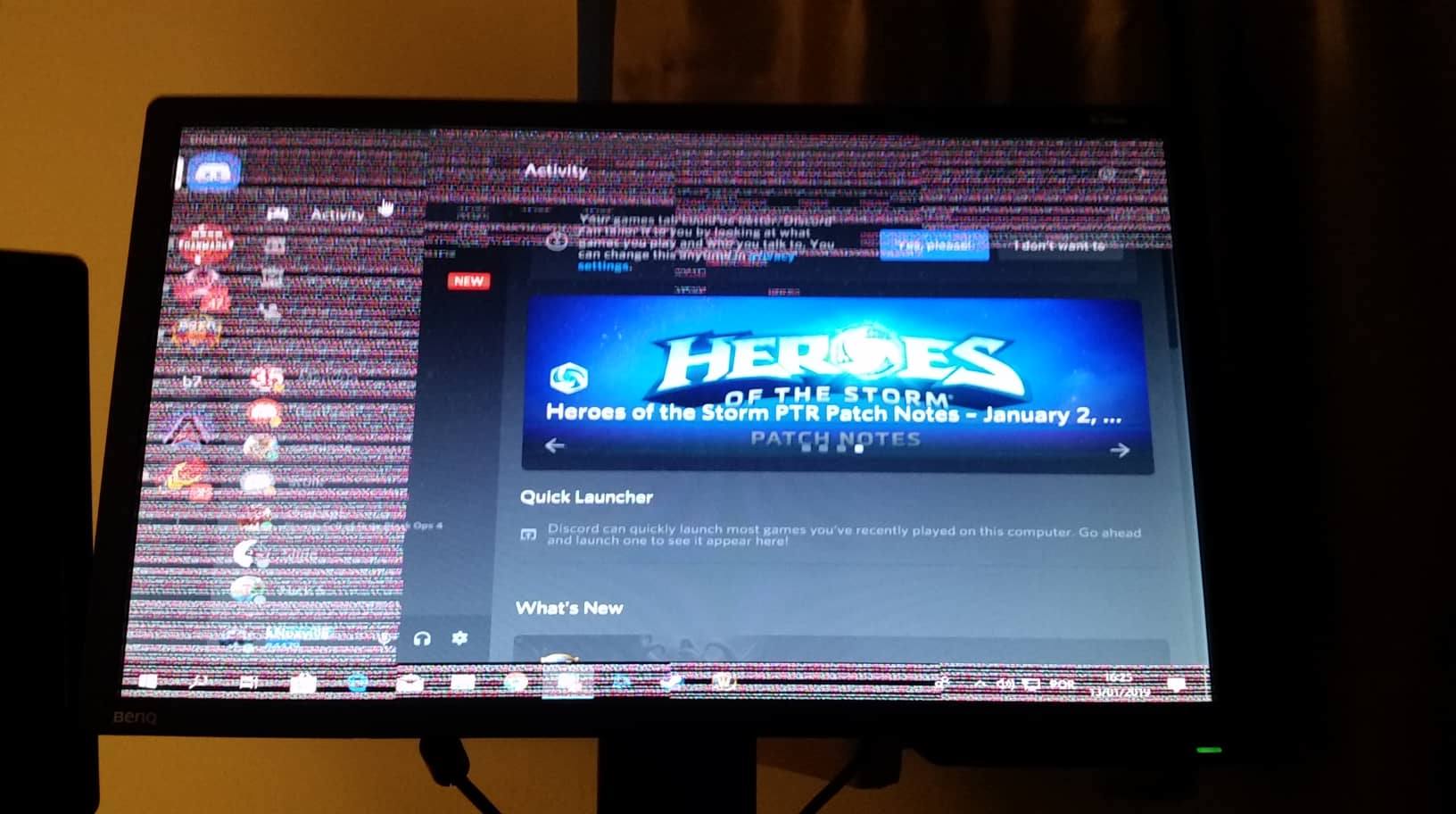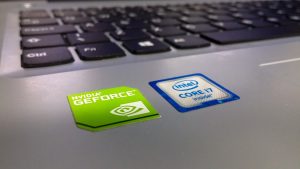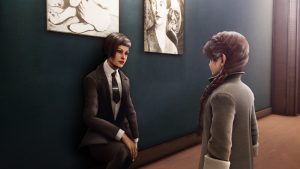Signs of a Bad Graphics Card
A graphics card is a crucial component that handles the rendering and display of images, videos, and animations on your computer monitor. Over time, graphics cards can develop issues, affecting the overall performance and user experience. In this section, we will explore some common signs that indicate a faulty graphics card.
- No display or distorted image: One of the most obvious signs of a bad graphics card is the absence of a display on your monitor or a distorted image. This could be due to a faulty connection or a driver issue.
- Frequent crashes or freezing: If your computer crashes or freezes frequently, especially during graphically-intensive tasks or while playing games, it can be indicative of a failing graphics card.
- Artifacts and graphical glitches: Strange visual anomalies, such as flickering screens, pixelated images, or color distortions, can be a clear indication of a faulty graphics card.
- Overheating and loud fan noise: An overheating graphics card can cause system instability and crashes. If you notice excessive heat or a loud fan noise coming from your graphics card, it may be a sign of imminent failure.
- Performance deterioration: A noticeable drop in graphics performance, such as lower frame rates and stuttering during gameplay or video playback, may signal a failing graphics card.
- Graphics-intensive applications struggle to run: If previously smooth-running graphics-intensive applications suddenly become sluggish or fail to launch altogether, it could be a sign of a bad graphics card.
- Error messages related to graphics: Error messages specifically mentioning graphics-related issues, such as “Display driver stopped responding,” can indicate problems with your graphics card.
- Incompatibility or driver issues: If your graphics card is not compatible with certain software or drivers, you may encounter compatibility problems or experience system crashes.
- Visual artifacts during boot-up: If you notice graphical glitches or artifacts during the boot-up process, it could indicate a defective graphics card.
- Failed diagnostics or benchmark tests: Running diagnostic tools or benchmark tests that fail or report errors related to the graphics card is a strong indicator of a failing component.
It’s important to note that while these signs might point to a bad graphics card, they could also be attributed to other factors like outdated drivers, software conflicts, or even faulty cables. If you experience any of these symptoms, it is recommended to consult with a computer technician or contact the graphics card manufacturer for further assistance.
No display or distorted image
One of the most obvious signs of a bad graphics card is the absence of a display on your monitor or a distorted image. When you turn on your computer, if the screen remains black or you see random lines and patterns instead of the usual desktop, it could indicate a problem with the graphics card.
There are several possible reasons why you might experience no display or a distorted image. Firstly, check the physical connections between your graphics card and the monitor. Ensure that the cables are securely plugged in and that there are no visible damages. Sometimes, a loose connection can prevent proper communication between the card and monitor, resulting in no display or a distorted image.
Another potential cause could be outdated or incompatible graphics drivers. The drivers act as a bridge between the operating system and the graphics card, translating instructions into visual output. If the drivers are corrupted, outdated, or incompatible with your graphics card, it may lead to display issues. In this case, updating the drivers or rolling back to a previous version can often resolve the problem. It’s advisable to visit the graphics card manufacturer’s website to download the latest drivers.
In some cases, a defective graphics card itself can be the culprit. Hardware malfunctions or component failures can result in no display or distorted image. If you suspect the graphics card is at fault, you can try testing it in another computer or replacing it with a known working one to see if the issue persists.
An overheating graphics card can also cause display problems. Graphics cards generate heat during operation, and if the cooling system is not functioning optimally, it can result in overheating. This can lead to display issues or even system crashes. Make sure your graphics card’s fan is clean and spinning properly. If necessary, you can remove the card and clean it using compressed air to remove any dust build-up. Additionally, installing additional case fans or improving airflow within your computer can help prevent overheating.
Remember, no display or distorted image can be caused by factors other than a bad graphics card. Issues with the monitor, cables, or other components can also result in similar symptoms. Therefore, it is important to troubleshoot systematically and consult with a professional if needed to accurately identify and resolve the underlying cause.
Frequent crashes or freezing
If your computer crashes or freezes frequently, especially during graphically-intensive tasks or while playing games, it can be indicative of a failing graphics card. When the graphics card encounters issues, it can cause the system to become unstable, leading to crashes or freezes.
One possible cause of frequent crashes or freezing is a lack of proper power supply to the graphics card. Graphics cards require a certain amount of power to function efficiently. If the power supply is insufficient or unstable, it can result in crashes. Make sure your power supply meets the requirements of your graphics card and consider upgrading to a higher wattage power supply if necessary.
Inadequate cooling can also contribute to frequent crashes or freezing. When a graphics card overheats, it can trigger system instability, leading to crashes. Ensure that the cooling system, including the fan and heatsink, is working properly and free from dust or debris. Additionally, you may want to consider installing additional case fans or improving the airflow within your computer to help dissipate heat effectively.
Outdated or incompatible graphics drivers can also cause frequent crashes or freezing. Graphics drivers translate instructions from the operating system into visual output. If the drivers are outdated or incompatible with your graphics card, it can result in system instability. Updating the drivers to the latest version or rolling back to a previous version can often resolve this issue. Visit the website of the graphics card manufacturer to find the appropriate drivers for your card.
In some cases, the crashes or freezes may be due to a faulty graphics card itself. Over time, the components of the graphics card can wear out or become damaged, leading to instability. If you suspect a hardware problem with the card, it may be necessary to replace it with a new one or have it inspected and repaired by a professional.
It’s important to rule out other possible causes of crashes or freezes, such as software conflicts or faulty RAM, before attributing the issue solely to the graphics card. Performing a comprehensive system scan for malware and running diagnostic tests can help identify any underlying problems. If the crashes or freezes persist despite troubleshooting efforts, consider seeking assistance from a computer technician who can further diagnose and address the issue.
Artifacts and graphical glitches
Strange visual anomalies, such as artifacts and graphical glitches, can be a clear indication of a faulty graphics card. These anomalies often manifest as flickering screens, pixelated images, random lines or shapes, or color distortions across the display.
One of the primary causes of artifacts and graphical glitches is an issue with the graphics card’s memory. The graphics card has its own dedicated memory, known as video RAM (VRAM), which stores and processes graphical data. If the VRAM becomes corrupted or malfunctions, it can lead to visual artifacts. In such cases, the graphics card may need to be replaced to resolve the issue.
Overheating can also contribute to artifacts and graphical glitches. When a graphics card gets too hot, it can cause the components to behave erratically, resulting in visual abnormalities. Ensure that your graphics card is adequately cooled and that the fans are functioning optimally. Cleaning the card’s heatsink and ensuring proper ventilation can help mitigate overheating issues.
Outdated or incompatible graphics drivers can also cause artifacts and graphical glitches. It’s important to keep your graphics drivers up to date to ensure compatibility with the latest software and operating system updates. Visit the website of your graphics card manufacturer to download and install the latest drivers specifically designed for your card model.
Another possible cause of artifacts and graphical glitches is a problem with the graphics card’s connection to the monitor. Loose or damaged cables can result in interference and visual anomalies. Check the connections between the graphics card and the monitor, ensuring that the cables are securely plugged in and that there is no physical damage. If necessary, try using different cables to see if the issue persists.
In some cases, artifacts and graphical glitches can be indicative of a failing monitor rather than a problem with the graphics card itself. To rule out this possibility, try connecting your computer to a different monitor and see if the issues persist. If the artifacts and glitches disappear when using a different monitor, it may be necessary to replace your current monitor.
When encountering artifacts and graphical glitches, it’s essential to troubleshoot systematically. Begin by checking the cables and connections, updating the graphics drivers, and ensuring proper cooling. If the issue persists, consider consulting with a computer technician who can provide further assistance and help determine whether your graphics card needs to be replaced.
Overheating and loud fan noise
An overheating graphics card can cause both performance issues and potential long-term damage to the hardware. If you notice excessive heat or a loud fan noise coming from your graphics card, it may be a sign of imminent failure.
One common cause of overheating is a buildup of dust and debris on the cooling system, including the fan and heatsink. Over time, these components can become clogged, preventing proper airflow and causing the graphics card to overheat. Regularly cleaning the cooling system using compressed air can help prevent overheating and maintain optimal performance.
Inadequate airflow within the computer case can also contribute to overheating. Ensure that the case fans are working properly and consider adding additional fans if necessary. Improving the overall airflow by managing cable clutter and ensuring a clear path for air circulation can make a significant difference in keeping the graphics card cool.
Using the graphics card beyond its intended limits can also lead to overheating. If you frequently push your graphics card to its maximum capacity by running demanding games or graphic-intensive applications for extended periods, the card’s temperature can rise significantly. It is important to strike a balance between performance and temperature to avoid potential overheating issues.
Outdated or faulty graphics card drivers can sometimes cause the GPU (Graphics Processing Unit) to work harder than necessary, resulting in increased heat production. Updating the graphics drivers to the latest version or rolling back to a previous stable version can help resolve driver-related issues that may be contributing to overheating.
If you have overclocked your graphics card, meaning you have manually increased its clock speed and voltage to achieve higher performance, it can significantly increase the heat output. In such cases, reverting the card to its default settings or dialing back the level of overclocking can help reduce the temperature and prevent overheating.
Lastly, a malfunctioning or failing cooling system, including the fan or heatsink, can cause overheating. If you notice a significant increase in fan noise or the fan not spinning at all, it may indicate a problem with the cooling system. If the issue persists despite cleaning and optimizing airflow, it may be necessary to replace or repair the cooling system.
Overheating can have detrimental effects on your graphics card, including decreased performance and potential hardware failure. If you consistently experience overheating issues, it is advisable to consult a computer technician or contact the graphics card manufacturer for further assistance and guidance.
Performance deterioration
A noticeable drop in graphics performance, such as lower frame rates, stuttering during gameplay or video playback, and overall sluggishness, may signal a failing graphics card. Performance deterioration can occur gradually over time or suddenly without any apparent reason.
One possible cause of performance deterioration is outdated or incompatible graphics drivers. As new software and games are released, they may require updated graphics drivers to perform optimally. If your graphics drivers are not up to date, it can result in decreased performance. Ensure that you regularly check for driver updates from the graphics card manufacturer’s website and install the latest versions.
Aging hardware can also contribute to performance deterioration. Over time, the components of the graphics card may wear out, causing decreased performance. This can be especially true if you have been using the graphics card for several years without regular cleaning or maintenance. Cleaning the graphics card and ensuring proper cooling can help improve performance to some extent.
Inadequate power supply to the graphics card can also lead to performance deterioration. If the power supply is insufficient or unstable, the graphics card may not receive the necessary power to perform at its full potential. Ensure that your power supply meets the requirements of your graphics card and consider upgrading if necessary.
Overheating can have a significant impact on performance. When a graphics card overheats, it can throttle its performance to prevent damage. This can result in decreased frame rates and overall sluggishness. Take steps to optimize the cooling of your graphics card, such as cleaning the fans and heatsinks and improving airflow within your computer case.
Software conflicts or malware can also cause performance deterioration. Conflicting software, background processes, or malware can consume system resources, impacting the performance of the graphics card. Perform regular system scans for malware and ensure that unnecessary programs and processes are not running in the background.
Lastly, it’s important to consider the system requirements of the software or games you are running. If your graphics card does not meet the minimum recommended specifications, it may struggle to perform well. Make sure to check the system requirements and compare them to your graphics card’s capabilities.
If you continue to experience significant performance deterioration despite troubleshooting efforts, it may be necessary to consider upgrading your graphics card to a newer and more powerful model that can handle the demands of modern software and games.
Graphics-intensive applications struggle to run
If previously smooth-running graphics-intensive applications suddenly become sluggish or fail to launch altogether, it could be a sign of a bad graphics card. Graphics-intensive applications, such as video editing software, 3D modeling programs, and high-end games, require a powerful graphics card to run smoothly. When the graphics card starts to deteriorate, it may struggle to meet the demands of these resource-intensive applications.
One possible reason for the struggle is an outdated or incompatible graphics driver. As new versions of the software and games are released, they may require updated graphics drivers to ensure compatibility and optimal performance. Check for driver updates on the graphics card manufacturer’s website and install the latest version to solve any driver-related issues.
If you have recently updated your operating system or installed new software, it could potentially cause conflicts with your graphics card. Incompatibilities between the software and the graphics card can result in poor performance or application crashes. Ensure that your graphics card is compatible with the software you are trying to run, and if needed, seek updates or patches from the software developer.
Insufficient system resources, including CPU and RAM, can also impact the performance of graphics-intensive applications. If your computer does not meet the minimum requirements for running these applications, it can lead to slow or choppy performance. In such cases, upgrading your hardware, such as adding more RAM or upgrading your CPU, may be necessary.
Overheating can affect the graphics card’s performance, especially during intensive tasks. When a graphics card gets too hot, it may lower its performance to prevent damage. Ensure that your graphics card is adequately cooled and that the fans are working correctly. Removing any dust buildup on the heatsink and improving overall airflow within your computer can help mitigate overheating issues.
If your graphics card is outdated or does not meet the recommended specifications of the applications you are trying to run, it may struggle to meet the performance requirements. Consider upgrading to a more powerful graphics card that can handle the demands of your desired applications.
Lastly, it’s essential to eliminate any software-related factors that may be impacting performance. Close unnecessary background processes, disable any unnecessary visual effects, and run a thorough scan for malware that may be consuming system resources.
If you have tried troubleshooting and addressing the potential causes outlined above but continue to experience difficulties running graphics-intensive applications, it would be advisable to seek assistance from a computer technician who can diagnose the issue further and recommend appropriate solutions.
Error messages related to graphics
Error messages specifically mentioning graphics-related issues can indicate problems with your graphics card. These error messages can range from generic messages, such as “Display driver stopped responding,” to more specific messages that provide details about the error.
One common cause of graphics-related error messages is outdated or incompatible graphics drivers. Graphics drivers serve as the interface between the operating system and the graphics card, translating instructions into visual output. If the drivers are outdated or incompatible with your graphics card, it can result in errors. Updating the drivers to the latest version can often resolve these issues. Visit the website of the graphics card manufacturer and download the appropriate drivers for your specific card model.
Corrupted or damaged graphics card drivers can also trigger error messages. This can occur due to software conflicts, improper installation, or unexpected system shutdowns. In this case, it may be necessary to uninstall the existing drivers and reinstall them to resolve the issue. Use a driver removal tool to completely remove any remnants of the previous driver installation before installing the new drivers.
Insufficient power supply to the graphics card can also lead to error messages. If the power supply is insufficient or unstable, the graphics card may not receive the necessary power to function properly, resulting in errors. Ensure that your power supply meets the requirements of your graphics card and consider upgrading to a higher wattage power supply if needed.
Another potential cause of graphics-related error messages is a fault in the graphics card itself. Hardware issues, such as memory failures or component malfunctions, can trigger error messages. If you suspect a hardware problem, testing the graphics card in another computer or replacing it with a known working card can help confirm or rule out the graphics card as the cause of the error.
System conflicts with other hardware or software components can also result in error messages related to graphics. Conflicting software, incompatible hardware, or outdated system components can cause communication errors, leading to graphics-related issues. It may be necessary to troubleshoot and resolve any conflicts between different components or software to mitigate these errors.
If you continue to receive error messages after attempting basic troubleshooting steps, it is recommended to consult with a computer technician or contact the graphics card manufacturer for further assistance. They will be able to provide specialized guidance and diagnose the specific cause of the error messages.
Incompatibility or driver issues
Incompatibility or driver issues can cause significant problems with your graphics card, resulting in poor performance and potential errors. When the drivers are not compatible with your graphics card or other hardware components, it can lead to various issues, such as display glitches, system instability, and even crashes.
One common cause of incompatibility or driver issues is using outdated or incompatible graphics drivers. Graphics card manufacturers regularly release driver updates to improve performance, fix bugs, and ensure compatibility with the latest software and operating systems. It is crucial to regularly check for driver updates from the graphics card manufacturer’s website and install the latest version to maintain optimal performance and compatibility.
When updating your graphics card’s drivers, it’s important to ensure that the version you choose is compatible with your specific graphics card model and operating system. Installing the wrong driver version can lead to conflicts or even system crashes. Take note of the model and make of your graphics card to download the appropriate drivers.
In some cases, conflicting software or hardware components can also cause incompatibility issues with your graphics card. Third-party software, such as antivirus programs or system utilities, may interfere with the proper functioning of your graphics card. Disabling or temporarily uninstalling conflicting software can help identify the source of the compatibility issue. Additionally, incompatible hardware, such as an outdated motherboard or outdated BIOS firmware, can also cause driver compatibility problems. Keeping your system updated with the latest BIOS firmware can help resolve these issues.
If you have recently upgraded your operating system or installed new hardware, it’s important to ensure that the graphics card drivers are compatible with these changes. Upgrading your operating system without updating the graphics card drivers can result in performance issues or even render the graphics card non-functional. Double-check the system requirements and compatibility information provided by the graphics card manufacturer before making any major changes to your system.
If you are experiencing incompatibility or driver issues, it’s best to uninstall the existing graphics card drivers and perform a clean installation of the latest compatible drivers. Use a driver removal tool to completely remove any remnants of the previous drivers before installing the new ones. This can help ensure a fresh and error-free installation.
If you continue to experience incompatibility or driver-related issues despite attempting to update and install compatible drivers, it is advisable to seek assistance from a computer technician or contact the graphics card manufacturer’s support team. They will have the expertise to diagnose and provide guidance on resolving the specific incompatibility or driver issues you are facing.
Visual artifacts during boot-up
If you notice graphical glitches or artifacts during the boot-up process, it could indicate a defective graphics card. These visual anomalies can manifest as random lines, blocks, or distorted images that appear on the screen as the computer starts up.
One possible cause of visual artifacts during boot-up is a failing graphics card. Over time, the components of the graphics card can wear out or become damaged, leading to inconsistencies in signal processing. When the graphics card is unable to properly initialize during the boot-up process, it can result in visual anomalies.
Incompatibility between the graphics card and the computer’s firmware or BIOS can also cause visual artifacts during boot-up. The firmware or BIOS is responsible for initializing various hardware components, including the graphics card, during the startup process. If there is a mismatch between the graphics card and the firmware or BIOS, it can lead to issues and visual artifacts. Ensuring that the firmware or BIOS is up to date and compatible with your graphics card can help mitigate this problem.
Damaged or improperly seated cables connecting the graphics card to the monitor can also cause visual artifacts during boot-up. Loose or faulty connections can result in signal interference and distortion, leading to visual anomalies. Check the cables connecting your graphics card to the monitor and ensure they are securely plugged in and undamaged.
Overheating can also contribute to visual artifacts during boot-up. When a graphics card overheats, it can affect the stability and performance of the card, causing visual inconsistencies. Ensure that your graphics card is adequately cooled and that the fans are functioning properly. Cleaning the card and improving overall airflow within your computer can help prevent overheating and minimize visual artifacts.
If you are experiencing visual artifacts only during boot-up and the issue disappears once the operating system loads, it could indicate a compatibility or driver issue. Graphics drivers play a crucial role in translating instructions from the operating system to the graphics card. Outdated or incompatible graphics drivers can result in visual inconsistencies during the boot-up process. Make sure to update your graphics drivers to the latest version to address any compatibility issues.
If you continue to experience visual artifacts during boot-up despite troubleshooting efforts, it is recommended to consult a computer technician or contact the graphics card manufacturer for further assistance. They will be able to provide specialized guidance and determine whether the graphics card needs to be replaced or if there are other underlying factors contributing to the visuals artifacts during boot-up.
Failed diagnostics or benchmark tests
Running diagnostics or benchmark tests can be a helpful way to assess the performance and health of your graphics card. If these tests indicate that the graphics card has failed or performs below expectations, it may be a sign of a failing or faulty graphics card.
Failed diagnostics or benchmark tests can be an indication of hardware issues within the graphics card. These tests check various aspects of the card’s performance, such as rendering capabilities, memory stability, and temperature management. If the graphics card fails these tests or performs significantly below the expected benchmarks, it suggests a problem with the card.
One possible cause of failed diagnostics or benchmark tests is an aging or damaged graphics card. Over time, the components within the card can deteriorate or become faulty, resulting in decreased performance and stability. In such cases, replacing the graphics card may be necessary to restore optimal functionality.
Overheating is another potential cause of failed diagnostics or benchmark tests. When a graphics card overheats, it can lead to thermal throttling or system instability, resulting in poor performance on benchmark tests. Ensure that your graphics card is adequately cooled, the fans are working properly, and the cooling system is free from dust and debris. Proper ventilation and maintaining an optimal temperature within your computer can help prevent overheating-related issues.
Outdated or incompatible graphics card drivers can also cause failed diagnostics or benchmark tests. Graphics drivers play a crucial role in ensuring the proper functioning and performance of the graphics card. If the drivers are outdated or incompatible with your hardware or software, it can lead to subpar performance. Updating the graphics drivers to the latest version can often resolve this issue. Visit the website of the graphics card manufacturer to download and install the appropriate drivers for your card model.
Software conflicts or compatibility issues with other system components can also contribute to failed diagnostics or benchmark tests. Conflicting software, incompatible hardware, or outdated system components can impact the performance and stability of the graphics card. Ensuring that your system is free from conflicting software and all components are compatible and up to date can help mitigate these issues.
If you consistently experience failed diagnostics or benchmark tests despite troubleshooting efforts, it may be necessary to consult with a computer technician or contact the graphics card manufacturer for further assistance. They will be able to provide specialized guidance and help diagnose the specific cause of the failed tests, and recommend appropriate solutions.

























